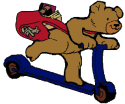Infant Development towards Reading
What to expect with babies and books
Infant Development towards Reading
Below are some indicators of what babies are
capable of at different stages of development
and what interests them about books and
language:
|
0 to 3
months
-
Begin to be interested in what
is going on around them and to
have some control of head
movement
-
Like to look at patterns,
instead of solid colours, and
prefer sharp contrast
-
Enjoy someone smiling at them
and talking to them
-
Can produce sounds and begin to
coo
-
Books made of stiff cardboard or
soft vinyl with simple large
pictures or designs set against
a contrasting background are
best
|
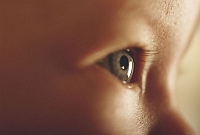 |
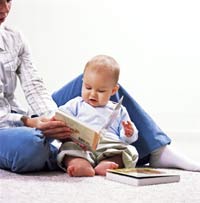 |
4 to 6
months
-
Cooing is well established
-
Begin to experiment with sounds
-
Become able to reach and grasp,
and begin to sit up
-
Books are something to explore
with mouth and hands, so
cardboard and vinyl are best
-
Express great interest in
nursery rhymes and when sung to
|
|
7 to 9
months
-
Very busy exploring objects with
their hands
-
Begin to crawl and explore the
environment
-
Babbling (syllable repetition,
eg. ba-ba-ba) becomes part of
the repertoire
-
Understand much of what is said
to them
-
Can turn pages in board books
-
Paper is something to crumple
and tear and taste, so keep
books with paper pages until
later
-
Can point to objects on a page
and enjoy having them named, but
not yet ready to follow a story
|
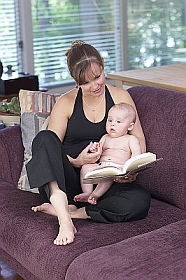 |
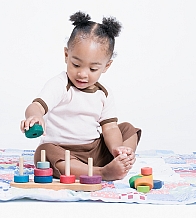 |
9 to 12
months
-
Very skillful with their hands
-
Learning to walk is a high
priority
-
Begin to say first words and
respond to simple questions and
directions
-
Beginning to make connections
between objects and events
-
Board books with familiar
objects and activities are very
interesting
-
Listen with interest to talk
about what they are looking at
in books, and attempt to repeat
words
|
|
12 to 18
months
-
Language blossoms
-
Produce a lot of jabbering which
sounds like actual speech
-
May start to sing along when
sung to or when listening to
recordings
-
Enjoy books with songs and
repetitive phrases
-
Begins to be interested in and
able to follow simple stories
about little ones that relate to
their own experience
|
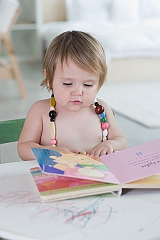 |
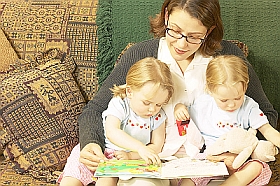 |
19 to 30
months
-
Begin to form simple sentences
and actual conversation is
possible
-
“Why?” becomes continuous, as a
technique for obtaining
information, but often also in
order to keep a conversation
going
-
Actual stories are enjoyed now -
about other children, about how
things work, and what makes
thing happen
-
Books with an illustration and a
little text on each page are
best
-
Will spend a lot of time looking
at illustrations
-
Love predictable books – ones in
which sentences are repetitive
and rhyme
|






